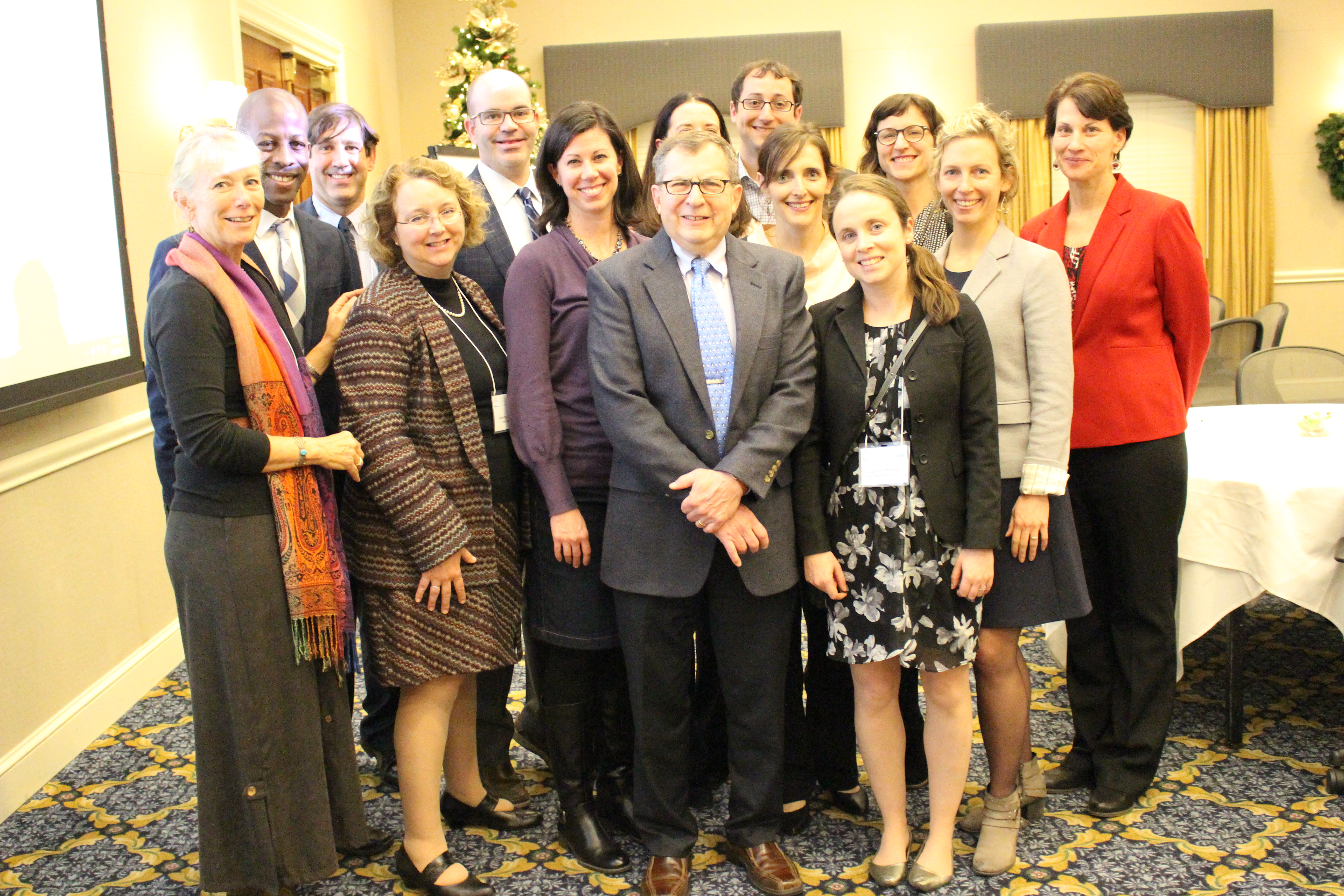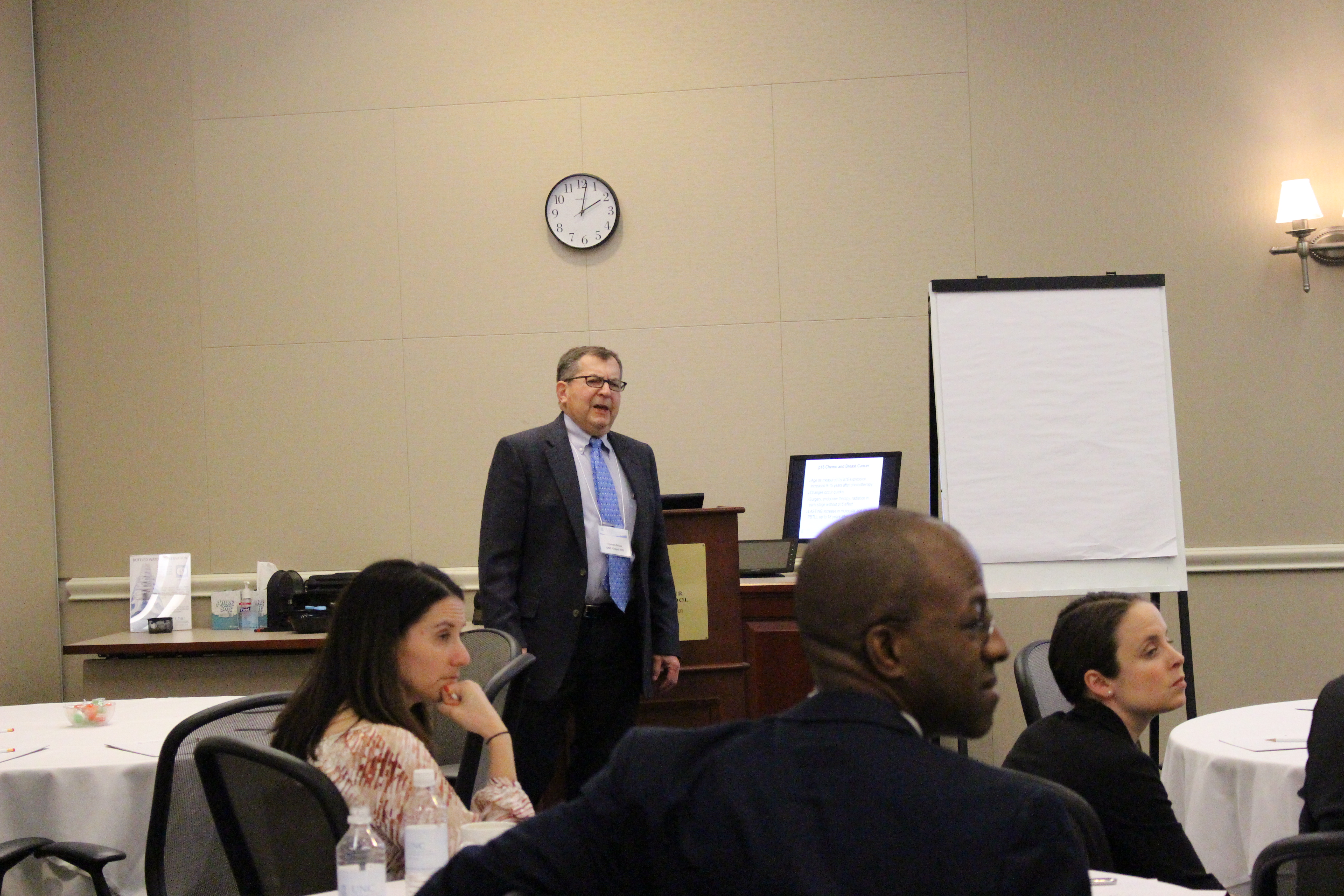

The University of North Carolina Lineberger Comprehensive Cancer Center’s Geriatric Oncology Research Symposium on Dec. 1 at the Rizzo Center in Chapel Hill drew researchers from across the country and abroad to share their latest findings on how to objectively measure biological age or physical fitness, to gauge tolerance for chemotherapy and other factors important to caring for older adults with cancer.
“The majority of new cancer diagnoses and deaths are in older adults,” said Grant Williams, MD, a former UNC Lineberger fellow who is now on faculty at the University of Alabama at Birmingham. “Unlike the developmental process, which is predictable and linear, the aging process is a very heterogeneous process. The pace for aging is different in all of us.”
Williams presented research into muscle wasting related to aging, or to illness at any age. In another study looking at colon cancer surgery and outcomes, he reported that researchers saw that age-related muscle wasting, or sarcopenia, was linked to risk of infection and longer length of stay.
“The question is: why is it a bad thing?” Williams said. “What is going on? We don’t just want to prognosticate things, we want to improve outcomes.”
Gretchen Kimmick, MD, of the Duke Cancer Institute, spoke on her efforts to incorporate a brief geriatric assessment into her clinical practice, and to using the assessment findings to identify issues that require medical care, such as urinary incontinence, dementia, visual impairments, or depression.
Kimmick stressed the importance of the test, saying its results can be used to predict morbidity and mortality or chemotherapy tolerance, but said its length can be an obstacle.
She described her effort to have clinic nurses administer a brief form of the assessment, and then to make referrals to specialists such as social workers, physical therapists, and others to address the issues identified by the assessment. Kimmick has also worked to bring the model into community practice settings.
“The problem is, I’m in a tertiary care center. I’ve got a physical therapist down the hall,” she said. “(Many) patients are seen in community settings where they don’t have social support. Hopefully, we’ll take something we all know is helpful in our tertiary care centers, and actually get it out where we know 80 percent of our (geriatric) patients are being taken care of.”
UNC Lineberger’s Trevor Jolly, MD, is also working to find solutions to bring the geriatric assessment into clinical practice, as he said it can be important in detecting risk of falls, a lack of social support, and cognitive impairment.
Jolly is leading a trial of an online tool to complete the geriatric assessment in hospitalized patients with emergency admissions for a cancer diagnosis. Patients complete the assessment, creating a printable report minutes later that contains recommendations for physicians to consider. Jolly and his collaborators are planning to examine the rate of referrals by patients’ doctors for deficits identified by the assessment.
“We need to figure out a (timely) way to do these assessments, and get them back to the people who are taking care of the patients,” he said.
Hyman B. Muss, MD, director of UNC Lineberger’s geriatric oncology program and the Mary Jones Hudson Distinguished Professor in Geriatric Oncology, is leading research into the use of a “molecular marker” of aging to see if it can predict outcomes for older adults.
Norman Sharpless, MD, the former UNC Lineberger director and now the director of the NCI director, and his colleagues have created a test that can detect expression of a gene coding for the p16 protein. The expression of this gene has been found to exponentially increase with chronological age, and researchers can measure it in certain cells in the peripheral blood. Patients with higher levels of this protein measured in their immune cells may be at higher risk for poorer cancer outcomes.
“You can send your blood to assess for telomere length, and they’ll try and estimate how long you’ll live,” Muss said. “Our purpose is different. We want to see if we can predict your toxicity, your responsiveness to treatment, and maybe someday, your longevity.”
Muss said there are several early-stage trials to study the impact of walking during chemotherapy treatment in older cancer patients, as measured by p16 levels. They are interested in studying whether walking can mitigate the negative side effects of treatment.
“It would be nice to have some test …that would be an independent marker of aging, and might predict outcomes,” he said.
Download a full list of symposium speakers and their presentations
